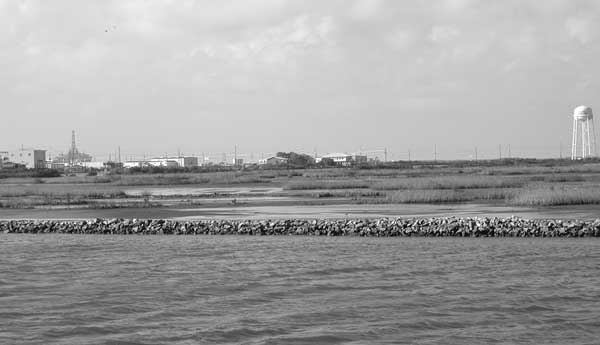
The Coastal Wetlands Planning, Protection, and Restoration Act (CWPPRA) provides the largest source of money to support wetland restoration activities in Louisiana. However, various federal agencies have programs that also provide a source of funds for restoration-related activities. One such program is the National Oceanic and Atmospheric Administration’s Community-based Restoration Program (CRP). The purpose of the CRP is to provide matching funds to support relatively small-scale restoration projects that benefit NOAA-trust resources. In fiscal year 2003, NOAA received $10 million to provide funding support for various restoration efforts nationwide.
The CRP works by encouraging landowners, private corporations, non-governmental organizations, and/or local governments to identify a worthwhile project and a source of local funds (or manpower) necessary to partially implement the project. They then fill out an application for a grant from NOAA that, if approved, provides additional funds to allow the project to be constructed.
More than $850,000 of CRP funds have been allocated since 2000 to construct approximately 20 projects in Louisiana. Several projects consisted of the placement of rock to create fishing reefs in Terrebonne Bay and Lake Pontchartrain. Other funded projects consisted of providing monetary support for various wetland planting efforts.
Two projects are helping to build marsh terraces on the Point au Chien management area in Terrebonne Parish and the Rainey Refuge in Vermilion Parish. The recent effort to remove abandoned crab traps was funded primarily by the NOAA CRP. The largest CRP project, in terms of total NOAA funding, is the Lafourche Parish Wisner Restoration project near Fourchon.
The Wisner project is a great example of the classic CRP project desired by NOAA. It combined the efforts of many groups to maximize project benefits while minimizing the cost to any one group. The Edward Wisner Trust provided the greatest financial support for the project, and was responsible for putting the various partners together.
The $700,000 Wisner CRP project consisted of: 1) the creation of approximately 45 acres of marsh using dredged material; 2) the installation of a 3,000-foot-long rock shoreline protection structure; 3) planting of black mangrove along the southern shoreline of Bay Champagne and smooth cordgrass on the created marsh platform; 4) the installation of a sand fence along the beach between Bay Champagne and the Gulf of Mexico; and, 5) the lowering of a levee that was partially impounding and harming the health of up to 1,800 acres of salt marsh east of Port Fourchon and south of Louisiana Highway 1.
The most expensive portion of the work (the marsh creation and rock dike) can be seen from the public boat launch in Fourchon. The rock dike was constructed with rock barged in from out of state and placed in position using Greater Lafourche Port Commission equipment. The dike looks great, and the dredged sediment placed behind it is at a suitable elevation for the establishment of marsh.
In March, volunteers will help plant smooth cordgrass in the created marsh area. While there is already some marsh vegetation present, planting of the larger and more exposed areas will help ensure the dredged material is not eroded by tides before it can be colonized by vegetation. By the end of next summer, the entire created marsh platform should be almost completely covered with vegetation.
The black mangrove plantings and sand fences placed last summer along the narrow section of beach between the Gulf of Mexico and Bay Champagne were damaged by the passage of several tropical storms last fall. However, most of the plantings and fence segments weathered the storms, and the mangroves are beginning to grow. The mangroves and sand fences should help trap sand in the future and strengthen this narrow piece of land against future storms.
It is hoped that a future CRP project can be funded to close the three breaches from the Gulf of Mexico into Bay Champagne created during the passages of Hurricane Lili and Tropical Storm Isidore. Those breaches threaten to widen and deepen and open the entire wetland system in the area to increased wave and tidal energies.
This spring, the Greater Lafourche Port Commission will use one of their marsh buggy backhoes to degrade the impoundment levee and replace the dredged material in the ditch from which it was taken. This should lead to the restoration of marsh where the levee used to be, as well as in the ditch. But more importantly, it will help restore wetland processes important to maintaining marsh health.
NOAA and the contributing sponsors realize that efforts such as the Wisner project are relatively small steps in comparison to what needs to be done to fully address the wetland loss problem in Louisiana. However, getting industry and the local community actively involved in restoration helps educate everyone about the overall problem and potential solutions.
If you are interested in more information about NOAA’s Community-based Restoration program, contact Cheryl Brodnax at 225-578-7923.
EDITOR’S NOTE: Richard Hartman is the leader of the Louisiana Habitat Conservation Division office of NOAA Fisheries.


